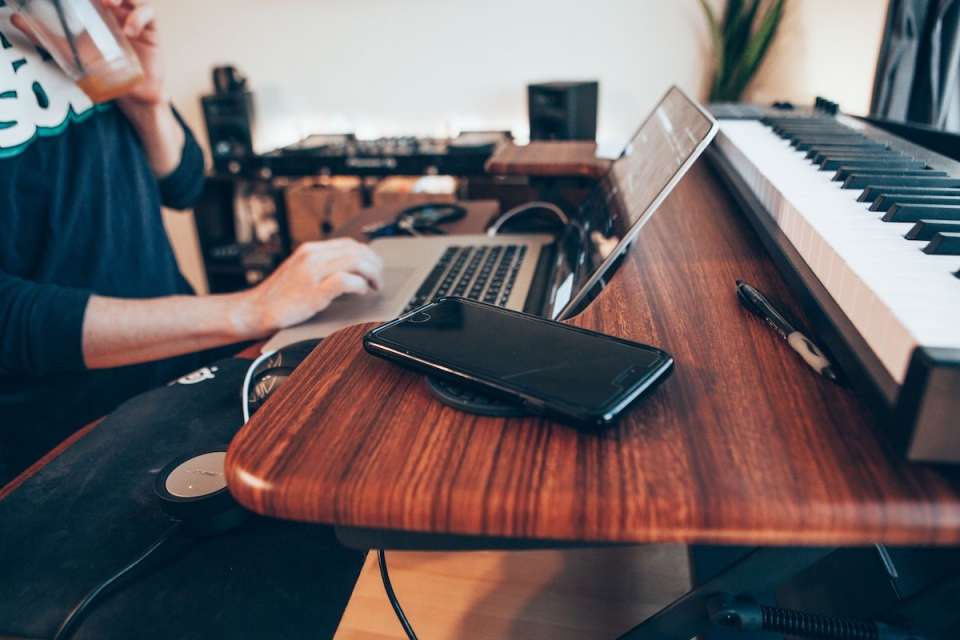If you've got a smart phone and an internet connection, you're ready to go! It couldn't be easier to go live and play music to your followers, but there are lots of things to think about to make the most of your time online, connect with your audience, and put your best foot forward in your live streamed gigs.
Choose your platform
There are several big platforms that are available to use for free, and that you're likely to already have an account with. Facebook, Instagram and YouTube are all social media giants with a free live video streaming feature, allowing you to reach all your followers - live!
It's a good idea to start with the platform where you have your largest audience, and expand from there. Software such as Restream allows you to stream to multiple platforms at once – alternatively there's always the option to download the live video you made and upload it to your other platforms afterwards for people to watch it back later.
Facebook also offers the option to can create an event in advance, invite people to attend, then finally live stream directly to the event page to make sure everyone knows when the stream is happening.
Another platform, Twitch, has also become a contender during the pandemic, but as you have to direct your followers there from Facebook or Instagram, you're likely to lose a few who would have watched on a more established platform.
Light yourself well
One huge mistake musicians make when filming themselves at home is backlighting! Your audience won't be able to see you well (or at all) if you're backlit, and it's likely they won't stick around if they can't see you performing. The easiest way to achieve sufficient lighting is with natural daylight. Position yourself in front of a window and rest your phone against it for the best naturally-lit look.
If you're going to stream during the evening when natural light is not an option, make sure you're lit well from the front. You could achieve this with a lamp, or if you're serious about live streaming often, invest in a selfie light for the ultimate Instagram-ready lighting set up.
Make sure your performance space is presentable and projects the right image. A plainer background may make for easier viewing, but don't forget to inject some of your personality and style into your surroundings. The viewer wants to learn something about you - let them in some personal stories, hobbies or interests, and they're likely to become more invested in you as an artist.
Get the sound right
If you're using your phone to record yourself, it's likely the microphone is on the bottom of the device. So, standing the phone up on its end on a hard surface will make it difficult for the phone to pick up your sound well, and your audience may hear distorted audio. If you've got a phone case on, this actually helps by lifting the microphone up a little and improving the sound quality. You could also get around this with a tripod, or even a friend holding the camera.
It's best to record in a quiet room with as little background noise as possible. Even though it'll be tough to achieve studio quality audio at home, little things can make a big difference! Choose a room with carpeting if possible, and without too many reflective surfaces (like the kitchen or bathroom). Close the windows and turn off the heating if it's noisy, and let your family or flat mates know you need some quiet for half an hour while you're streaming.
Before you start, make sure everything is in order. Check the video
looks smart, well lit and interesting, and that the microphone is
working and capturing a good level of sound. You could even try having a practice
of the set up you're going to use with a friend watching online.
Step up your audio
If you want to take the next step and record a more professional audio feed, you'll need some extra equipment: a computer, a camera, a capture card and an audio recording interface. This could be well worth the investment as live performances are set to be difficult for some time. Spend some time getting your equipment set up and get the best sound you can.
You'll need to use software such as OBS Streamlabs, which also allows you to stream to Facebook and YouTube at the same time.
Another great way to get great quality audio on a video is to record it in advance, then film a live session to it. You can then put this out as a live stream. Although you won't be able to interact in real time, it's still a good place to start!
Promote your performance
Make the most of your virtual gig by getting as many people watching as possible. Promote it in advance on all your channels and give your followers the link they'll need to watch you. Tell them what time you'll be on, how long for, and what you'll be playing. Consider creating an 'event' on Facebook or scheduling a live stream on YouTube, which will let your subscribers know what you're planning. If you have a mailing list, send the link out to everyone in advance.
Don't forget to tell your friends and family too, as they'll be keen to support you and may bring along their own friends and family who are potential new fans for you!
Post reminders in advance of the performance, and updates on any details, set list choices or special guests you might have. Respond to people who ask questions quickly, and consider posting the response so other followers will have the same information. Let everyone know why you're performing, and why you want them to watch. Maybe there's a new song you're going to reveal, or a requests section you want everyone's input on - let them know.
Monetize the gig
You could add a virtual tip jar via PayPal or GoFundMe and encourage people to contribute, or plug your album or merchandise sales via a link in the video description to make money this way. Twitch has an in-built tip jar feature too. Chat to the audience about how appreciated tips are, most people are happy to pay a small amount for free entertainment online, especially during trying times. Don't be afraid to ask!
If you're racking up the views on YouTube, you can monetize your videos there with adverts. Be careful here if you are playing covers though, as YouTube can flag the video as containing copyrighted material, in which case the revenue will go to the rightful owner of the track. They can even do this with acoustic covers now, not just original songs.
Connect with your audience
During the pandemic, social media has really shown its value in its ability to connect people, wherever they are in the world. Be sure to make a meaningful connection with your audience - introduce yourself, tell them how you are, why you're doing the live stream and why you're a musician. Get them involved in your time online, and encourage lots of interaction.
Take advantage of the comments section, and take breaks between songs to chat to the people who are writing to you. Say hello to people if you can, answer questions and play requests if you have time. Making the audience feel as involved as possible will keep them engaged, and have them coming back for more next time.
In a time of deep disconnection in our society, it's more important than ever to connect honestly with your fans. Show the audience the stories, emotions and truths behind your songs, and let them into your inner world. Invite them to experience the music with you, and take them with you on your journey. If you make someone feel part of your story, they'll keep listening.
Thank them for their time (and money, if they paid), and let them know what it means to you. Tell them when your next gig will be, and keep them posted on your socials channels.
![]()
![]()










